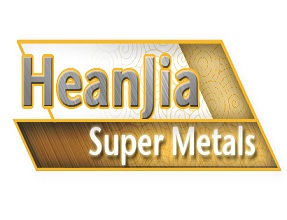You are here: home > Alloys House > High Potency and lightweight properties of Titanium
Product (738)
- Pure Nickel Products (38)
- Incoloy Products (74)
- Inconel Products (72)
-
FeCrAl Product
(99)

-
Nichrome Products
(68)

- Monel Products (36)
- Hastelloy Products (49)
- Nickel Iron Alloy Product (59)
-
Nickel Copper alloys
(47)

- Nonferrous Metal Product (27)
-
Resistance Wire
(90)

- Stainless Steel Product (42)
- Mesh Demister (20)
- Others (17)
Product Forms (14)
Quality Certificate (11)
Learning Gallery (30)
Incoloy News (9)
Inconel News (22)
Molybdenum News (7)
Nikrothal News (4)
Nichrome News (13)
Titanium News (2)
Nickel News (8)
Alloys House (30)
Tools (27)
Nickel alloy News (30)
Latest Buzz (30)
nickel chrome copper iron alloys news (28)
Credit Report
Products Index
Company Info
Heanjia Super-metals Co., Ltd. [China (Mainland)]
Business Type:Manufacturer, Trading Company
City: Beijing
Province/State: Beijing
Country/Region: China (Mainland)
Alloys House
High Potency and lightweight properties of Titanium
Titanium, a popular metal is represented with the chemical symbol of Ti and has atomic number of 22 in the periodic table. Titanium is a bright metal comes under the group of transition elements and it has silver shade, little density and large potency. Its resistive nature to ocean water, chorine and aqua rust make Titanium wire suitable for anti rust applications.
In 1791, Titanium element was found by Cornwall, a British and Martin Heinrich. Titanium is available in the nature in the several minerals such as rutile and others extensively available on the earth's surface. Moreover titanium is also found in the living creatures, rocks, aqueous and top soil. The element is obtained from the principal ore by following the Kroll mechanism. The popular combining form of titanium is titanium dioxide that is also called photocatalyst and it is used in the generation of white pigments. The other titanium combining forms are titanium tetrachloride that constitutes a smoke film and it is also used as catalyst and titanium trichloride that is utilized as a catalyst in the generation of polypropylene.
In 1791, Titanium element was found by Cornwall, a British and Martin Heinrich. Titanium is available in the nature in the several minerals such as rutile and others extensively available on the earth's surface. Moreover titanium is also found in the living creatures, rocks, aqueous and top soil. The element is obtained from the principal ore by following the Kroll mechanism. The popular combining form of titanium is titanium dioxide that is also called photocatalyst and it is used in the generation of white pigments. The other titanium combining forms are titanium tetrachloride that constitutes a smoke film and it is also used as catalyst and titanium trichloride that is utilized as a catalyst in the generation of polypropylene.
Titanium is used in various forms in the industrial level like titanium wire, bar sheet and others. This element can be combined with other elements to produce super alloys. The popular elements used to mix with Titanium are iron, aluminum, vanadium, molybdenum and others. The resulted alloys are lightweight in nature and widely used in the spacecraft industry in the manufacturing of spacecraft engines, missiles, defense industry, metallic industry, petro industry, paper and pulp manufacturing, bio food, orthopedic restoration, oral, sport items, jewelry, cell phones and various other uses.
The most common and essential features of titanium wire are rust protective nature and the largest strength to weight ration as compare to other metals. When titanium is in its pure form it is highly potential just like steel materials though lightweight. Titanium is found in the two basic allotropic varieties as well as five isotopes. The common titanium isotopes are 46Ti, 50Ti, and that are available on the earth in the highest amount up to 73.8%.
Titanium and Zirconium possess almost similar physical and chemical properties because both elements have equal number of electrons in their valence shells as well as they are present in the single group of periodic table.
The titanium wire is popular for exhibiting large potency to weight ratio among other metallic wires. The wire is characterized with strength, low density and highly ductility. Moreover metal is bright with melting point above of than 1,650 °C or 3,000 °F that features this metal to be used in the form of refractory material.Titanium is paramagnetic in nature and shows partial conductive nature to heat and electricity.
The industrial categorization of titanium has ultimate tensile value of value 63,000 psi or 434 MPa, that is almost near to poor quality steel products though it is lightweight more by 45%. Moreover titanium wire 60% denser than aluminum metal and double times stronger, therefore it is popularly used as 6061- T6 alloy. Special titanium alloys exhibit high tensile potency of more than 200,000 psi (1,400 MPa). Though titanium metal loses its strength when it is heated at temperature more than 430 degree C.
Pre Page:
Structure of Nitinol
Next Page:
Heating properties of Titanium
.gif)


